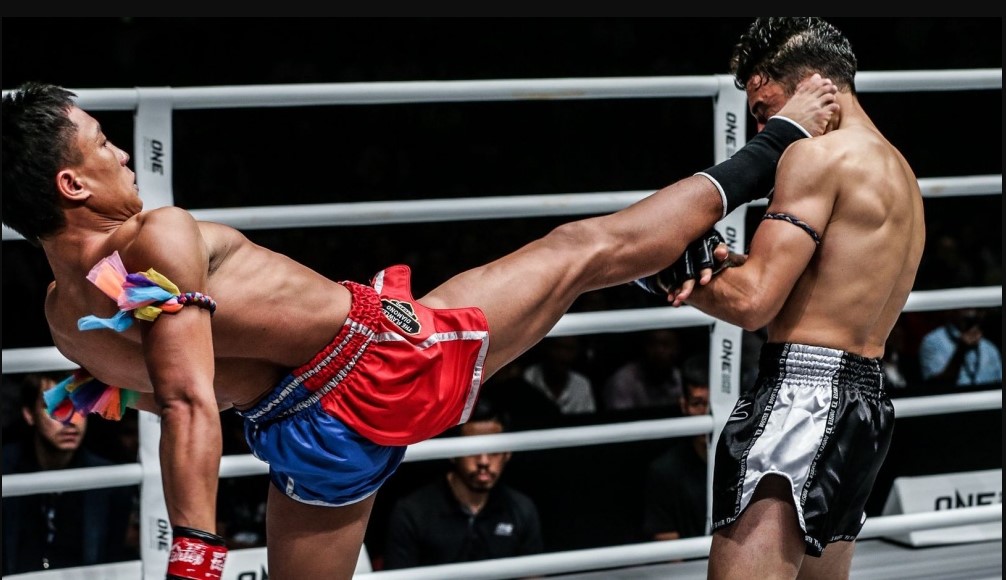Muay Thai, also known as the “Art of Eight Limbs,” is Thailand’s national sport and one of the most respected martial arts in the world. With a history deeply rooted in Thai culture and warfare, Muay Thai has evolved into a highly technical and physically demanding sport practiced by fighters and fitness enthusiasts globally.
Table of Contents
This article explores what Muay Thai is best known for, covering its distinctive techniques, cultural heritage, training regimen, and its global influence in combat sports.
1. The Art of Eight Limbs
The most defining feature of Muay Thai is its use of eight contact points:
- Fists
- Elbows
- Knees
- Shins
Comparison of Striking Points in Martial Arts
| Martial Art | Striking Points | Nickname |
|---|---|---|
| Boxing | 2 (Fists) | Sweet Science |
| Kickboxing | 4 (Fists, Feet) | – |
| Muay Thai | 8 (Fists, Elbows, Knees, Shins) | Art of Eight Limbs |
| Taekwondo | 4 (Fists, Feet) | – |
| Karate | 4 (Fists, Feet) | – |
This expanded arsenal makes Muay Thai one of the most effective striking systems for both sport and self-defense.
2. Devastating Elbow and Knee Strikes
Muay Thai is renowned for its lethal elbow and knee strikes. Fighters use close-range techniques to inflict maximum damage, particularly during clinches (grappling while standing).
Common Elbow and Knee Techniques:
| Technique | Description | Usage |
|---|---|---|
| Horizontal Elbow | Sideways elbow aimed at face or jaw | Close-range combat |
| Upward Elbow | Upward strike to the chin or nose | Counter-attack or combo finisher |
| Flying Knee | Jumping knee aimed at the head | Aggressive and dramatic KO move |
| Straight Knee | Thrusted knee to the body or ribs | Clinch fighting |
These techniques make Muay Thai not just effective but also visually thrilling to watch.
3. Powerful and Conditioned Kicks
Muay Thai fighters are trained to throw some of the hardest kicks in combat sports, particularly the roundhouse kick using the shin instead of the foot.
Muay Thai Kick Characteristics
| Kick Type | Key Feature | Target |
|---|---|---|
| Roundhouse Kick | Delivered with shin, full-body rotation | Legs, ribs, head |
| Teep (Push Kick) | Defensive tool, used to create space | Midsection or thigh |
| Low Kick | Targets opponent’s legs to slow movement | Thigh, knee |
Shin conditioning is a big part of training, enabling fighters to kick with bone-breaking power.
4. Clinch Fighting Mastery
Clinch work is where Muay Thai stands apart from other striking sports. In the clinch, fighters use:
- Control techniques
- Sweeps
- Knees and elbows
The goal is to dominate and damage opponents at close range.
Clinch Skills in Muay Thai
| Clinch Technique | Purpose |
|---|---|
| Inside Control | Dominates opponent’s posture |
| Off-balancing (Sweeps) | Unbalances or throws opponent |
| Knee Barrage | Inflicts damage while clinching |
5. Rituals and Cultural Significance
Muay Thai is not just a combat sport—it is a deeply spiritual and cultural tradition in Thailand.
Notable Rituals and Symbols:
| Element | Significance |
|---|---|
| Wai Kru Ram Muay | Pre-fight dance to honor trainers and ancestors |
| Mongkhon | Sacred headband worn during ritual |
| Pra Jiad | Armbands for protection and luck |
| Music (Sarama) | Traditional Thai music played during fights |
These cultural elements help distinguish Muay Thai from other martial arts, adding emotional and spiritual depth to each bout.
6. Conditioning and Training
Muay Thai fighters undergo some of the most grueling training in combat sports. A typical training regimen includes:
- Running (5-10 km/day)
- Pad work
- Bag work
- Clinch practice
- Sparring
- Body conditioning (shin hardening, core strengthening)
Sample Daily Muay Thai Training Schedule
| Time | Activity |
|---|---|
| 6:00 AM | Long-distance run (5–10 km) |
| 7:00 AM | Shadowboxing and Stretching |
| 8:00 AM | Pad work with trainer |
| 9:00 AM | Sparring and clinch drills |
| 10:00 AM | Strength & conditioning / cooldown |
| 3:00 PM | Repeat similar evening session |
This intense schedule develops not only skill but unmatched mental toughness and endurance.
7. Success in MMA and Global Combat Sports
Muay Thai’s effectiveness has been validated in MMA (Mixed Martial Arts), where many of the top strikers have a Muay Thai background. Notable fighters with strong Muay Thai roots include:
- Anderson Silva
- Joanna Jędrzejczyk
- Jose Aldo
Organizations like ONE Championship now feature pure Muay Thai bouts with global stars, further elevating the sport’s profile.
8. Knockout Power and Fan Appeal
Because of its full-contact nature, Muay Thai produces:
- High KO rates
- Explosive finishes
- Crowd-pleasing techniques
9. Scoring System in Muay Thai
Understanding how fights are judged is crucial.
Table 5: Muay Thai Scoring Criteria
| Scoring Factor | Weight in Decision |
|---|---|
| Effective Striking | High (clean, powerful techniques) |
| Ring Control | Medium (aggression and control) |
| Defense | Medium (blocks, counters, evasion) |
| Clinch Dominance | High (damage and control in clinch) |
Judges prioritize effective strikes and dominance, especially in later rounds.
10. Muay Thai’s Global Expansion
From Bangkok to Brazil, Muay Thai has spread worldwide. It’s now practiced for:
- Professional fighting
- Self-defense
- Fitness and weight loss
- Mental discipline
Muay Thai is known for much more than just its brutality. It’s a martial art that combines tradition, technique, and tremendous physical prowess. From the vicious elbows to the ceremonial Wai Kru, every element of Muay Thai carries meaning, discipline, and history.
Summary Table: What Muay Thai Is Known For
| Category | What It’s Known For |
|---|---|
| Striking Techniques | Elbows, knees, shins, clinch |
| Cultural Depth | Rituals, music, traditions |
| Physical Intensity | Grueling conditioning and high KO potential |
| Technical Complexity | Clinch work, timing, control |
| Global Reach | MMA crossover, international gyms and tournaments |
Whether you’re a fighter, a fitness enthusiast, or a fan, Muay Thai offers something profound. It’s not just a way to fight—it’s a way of life.


